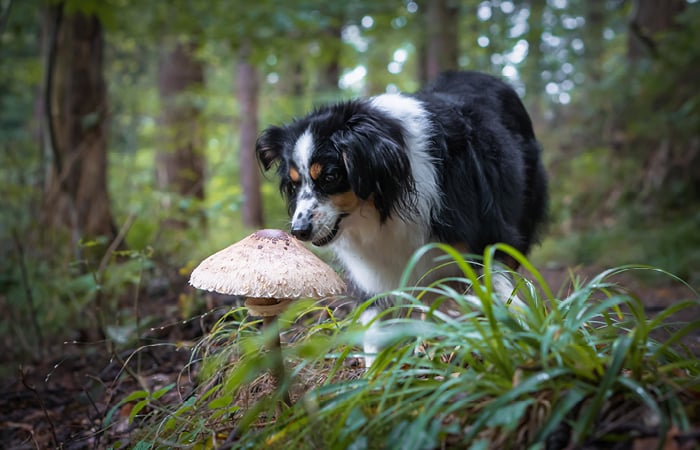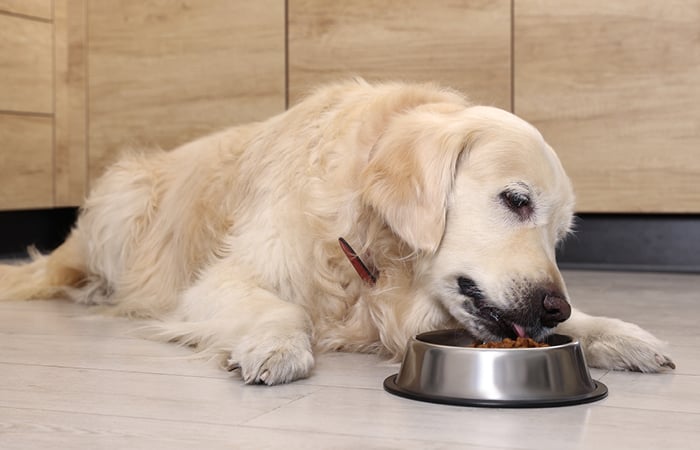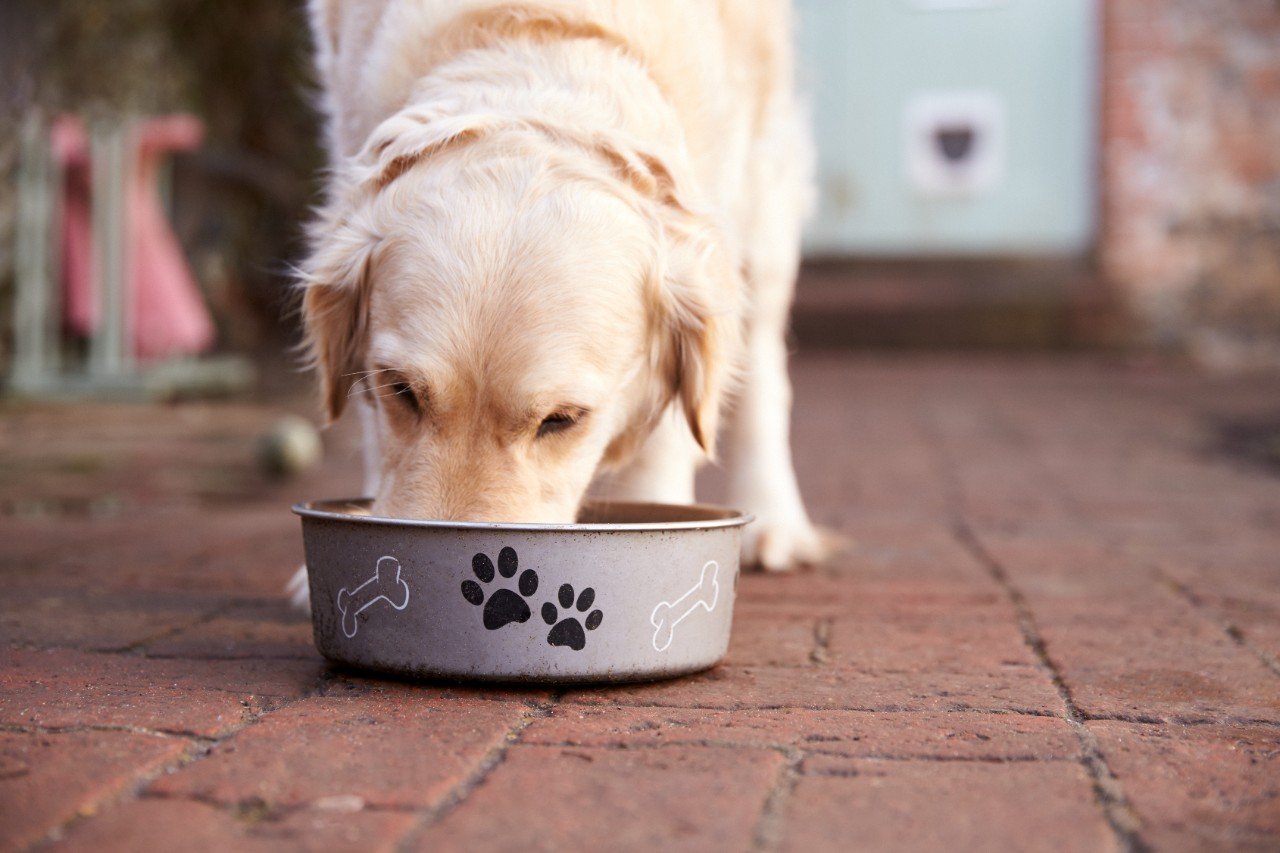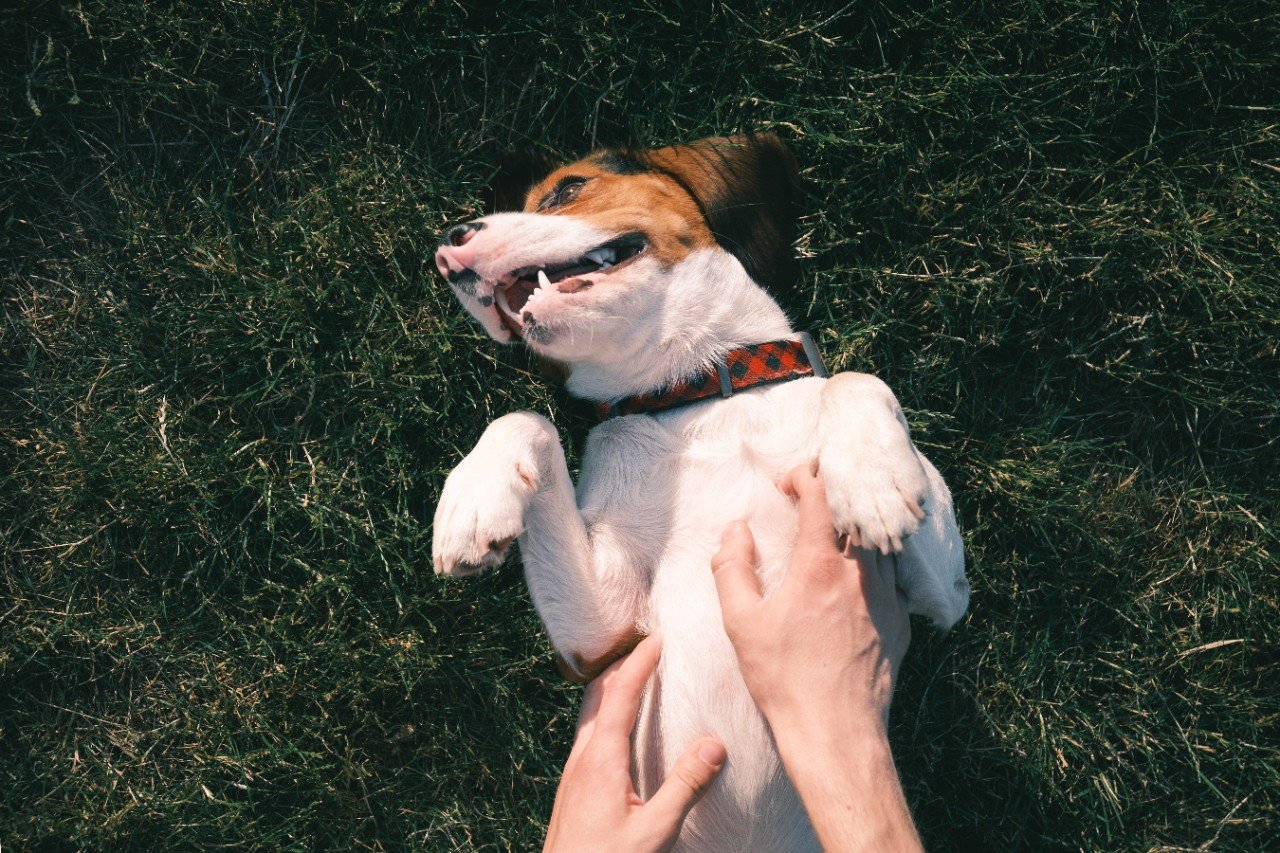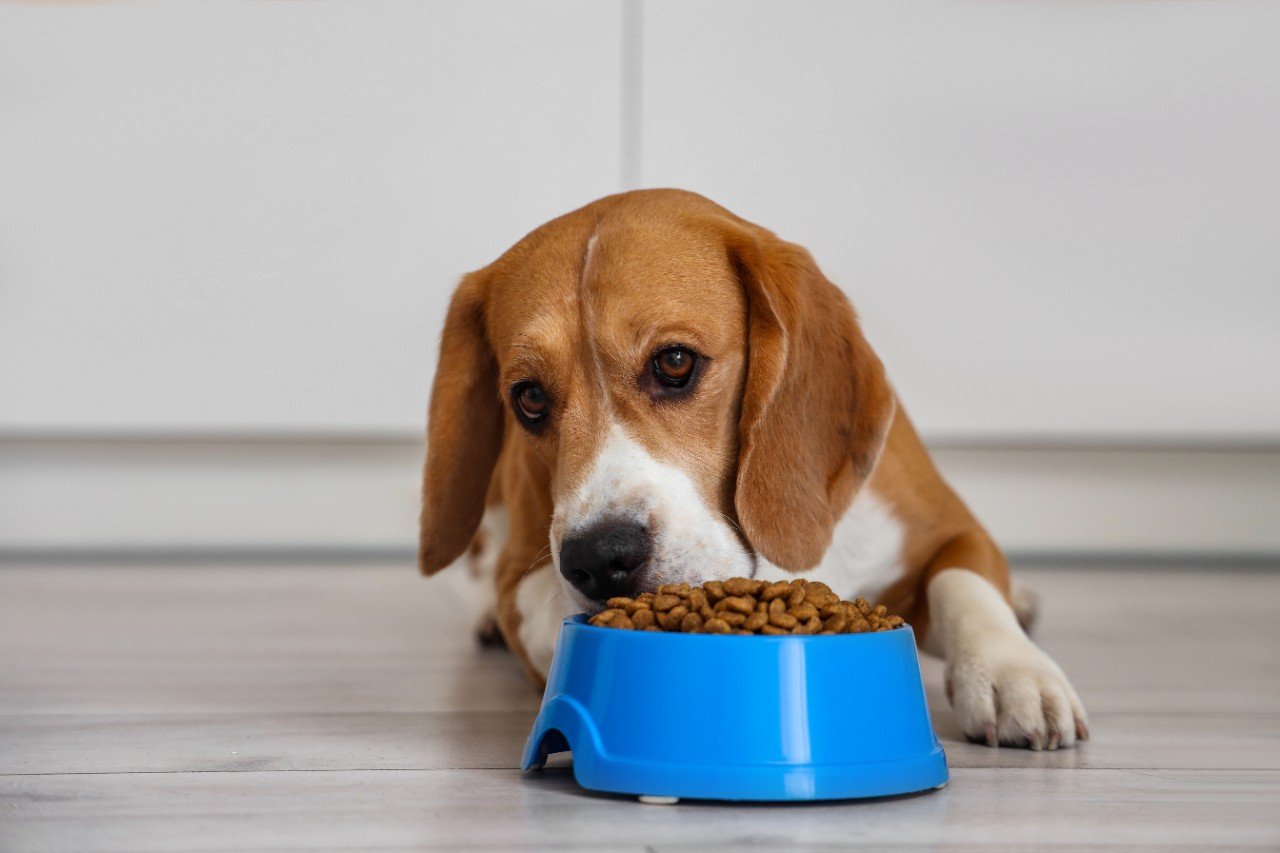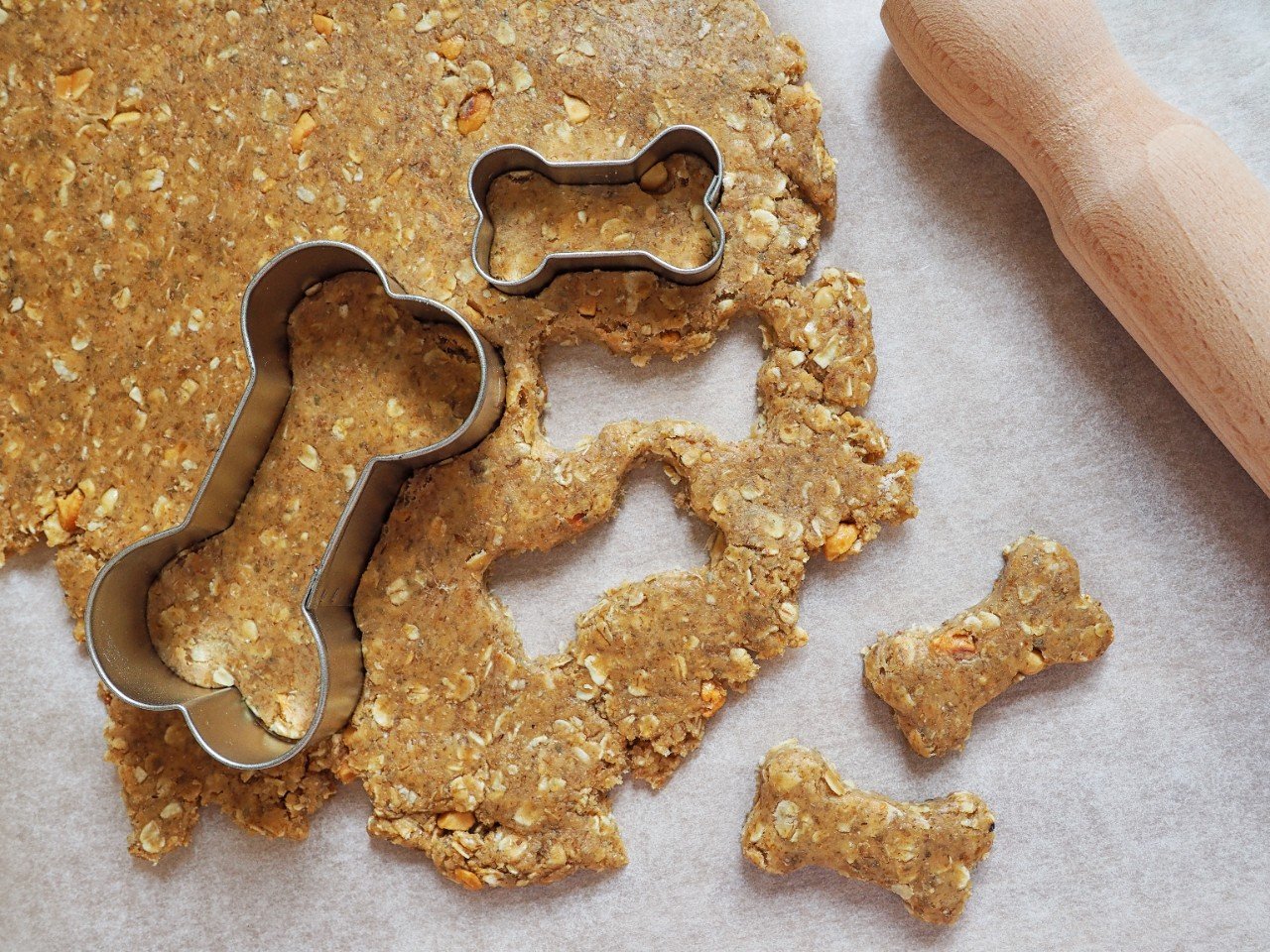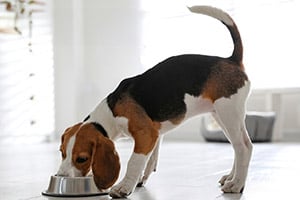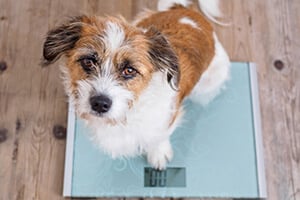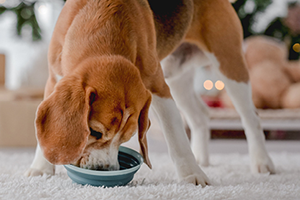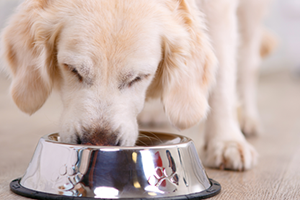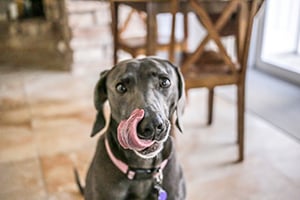From six months your puppy can have two meals a day, setting a habit for the rest of their life. However, three to four meals a day may be more suitable for toy or giant breeds.
Carefully measure out the correct amount recommended on the packaging. Weighing is more accurate and reduces the temptation to add a bit extra for luck, which can lead to weight gain. Being overweight makes dogs vulnerable to health issues such as arthritis or diabetes.
Dog chews can help keep your puppy amused but be sure they can’t splinter.


